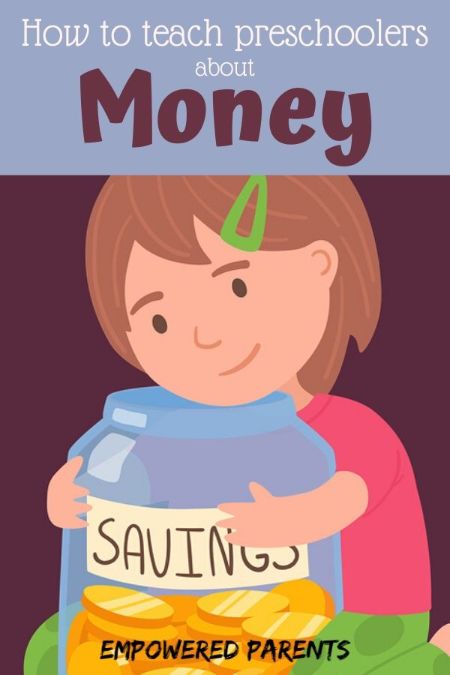Learning about money during early childhood is not only an important life skill but also an early maths skill.
Keep reading to find out the 6 tips for introducing money to kids, as well as 10 simple and fun activities for teaching preschoolers money concepts. These ideas are suitable for the home or classroom.
The best way for children to learn any concept during the preschool years is through hands-on activities that are practical and meaningful.
Before you delve too deeply into the actual value of the numbers, children need to get a sense of concepts such as:
- what money is (money pays for things, experiences, services, etc.)
- its role in society
- how money is earned
- different kinds of money (paper, coins, credit cards, etc.)
- how to pay for something
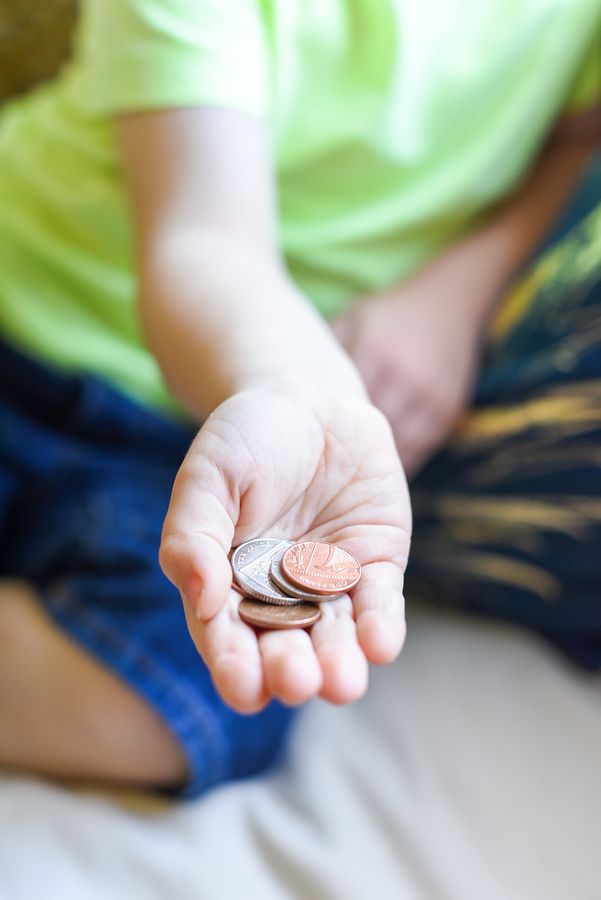
What Age Do You Teach Kids About Money?
The best time to actively start teaching kids about money is during the preschool years, however, even toddlers will start role-playing and can “pay” for things at the store.
Start as early as your children are willing to engage, but never force formal learning until they are ready.
It can take several years before children are really capable of working out the correct change or fully understanding the value of things. Up until the third grade, simply keep exposing kids and providing opportunities to practise the skills.
Use these number recognition games and activities to start teaching your preschoolers to recognize the numbers.
How Do You Teach Preschoolers About Money?
Here are 6 general tips for how to teach money to preschoolers, followed by 10 practical activities to try at home or school.
1. Teach the Value of Money
Learning how to purchase something at a store is one of the basic skills a child can learn from an early age, through role-playing as well as actually purchasing and paying in cash.
In time, children will start to learn the value of coins and notes, as well as what different items cost.
Don’t fixate too much on memorizing the value of different coins and notes. Just keep talking about “How much does it cost?” and “Let’s see if we have enough”, etc. With lots of practice, the values will sink in over time.
2. Teach the Different Forms of Money
The concept of money has changed so much in recent times.
If we only teach children about physical money in the form of coins and notes, they will find it confusing to watch us performing online transactions or paying for goods by swiping magical credit cards.
As complex as it is to explain concepts such as bank cards, interest, currency, and instalments, these are conversations you can build into your daily interaction as you deal with money in real time.
3. Teach Kids About Good Money Habits
Another aspect of teaching children about money is habits. By teaching kids at a young age you can develop healthy habits that will prepare them for their future.
They can learn to save, budget, prioritize needs over wants (the mortgage or rental is paid before spending money on entertainment), etc.
In today’s world of over-consumerism, children should also be taught about the impact of unnecessary spending on people and the environment.
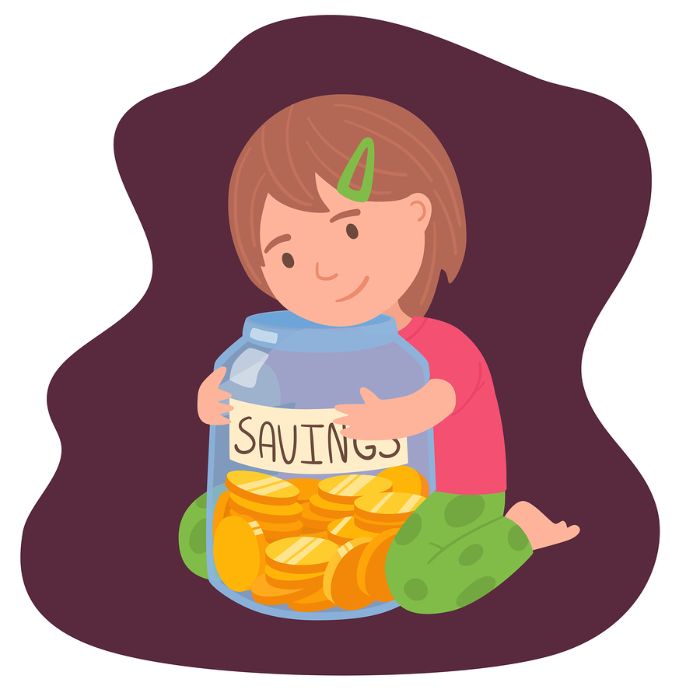
4. Discuss Values and Inner Beliefs About Money
You may also want to teach your children values around money, such as donating to help the less fortunate, not being wasteful, developing a habit of gratitude, treating people of all economic backgrounds respectfully, etc.
5. Teach How Money is Earned
We often teach children an oversimplified version of how people earn a living. You work hard and you earn an income.
While this may be true, don’t forget to expose your children to reality as they get older and can understand more complex ideas.
Children can learn that different careers are paid differently and that education levels may influence how much people are paid.
They also need to learn that people with all kinds of backgrounds have started businesses, many of which are successful and many of which fail.
Explain that many people invest money or learn how to “make money work for them”.
6. Teach Concepts in a Practical Way
While you can and should talk to your children about all these ideas and concepts related to money, using the games and activities listed below is a great way to let them experience these ideas and understand them in a practical way.
Simply telling your children about how a bank works is very different from taking actions such as opening an account, checking your balance online, swiping a debit card and reading the new balance, running out of funds, and depositing or transferring money.
Talk to them and also give them real-life experiences and they will understand the concept of money in practice.
10 Hands-On Money Activities for Preschoolers
Here are some fun and practical ideas for teaching some of the concepts mentioned above.
1. Make a Piggy Bank
Making a piggy bank can be a fun art activity. Use a glass or plastic jar, cut a hole in the top that will fit coins or paper notes and decorate the outside with paint or stickers/paper.

If you are feeling really brave – blow up a balloon, paper mache newspaper around it, make ears and draw on a face. Paint it when dry and cut a hole in the top and you have a piggy bank!
Make three jars:
- One for saving money – this money could be taken to the bank and deposited into a savings account.
- One for spending – this jar could be for saving money to buy a specific item, or just for general spending.
- One for donating – teach your children to help those less fortunate by saving some change to give to those in need.
Take your preschooler with you to open a real bank account so your child learns that money can be saved in multiple places. Explain how money grows in the bank and earns interest.
2. Host a Restaurant Night
Host a restaurant night for dinner one night. Plan it together with your children. Choose a name for the restaurant and create a simple menu with prices. Prepare the food in advance and have as many courses as you like.
Let the kids be the restaurant staff and the adults be the customers. Let them seat you, take your orders, bring your food to the table and look after you.
After dinner, have them draw all the items you ate on a “check” and ask you to pay. Ask for some change or pay with a credit card.
Don’t forget to leave a generous tip for the waiter!
3. Set Up a Play Store
Pretend play is one of the most common types of play in early childhood, and it’s how children make sense of their world by acting out what they see and hear every day.
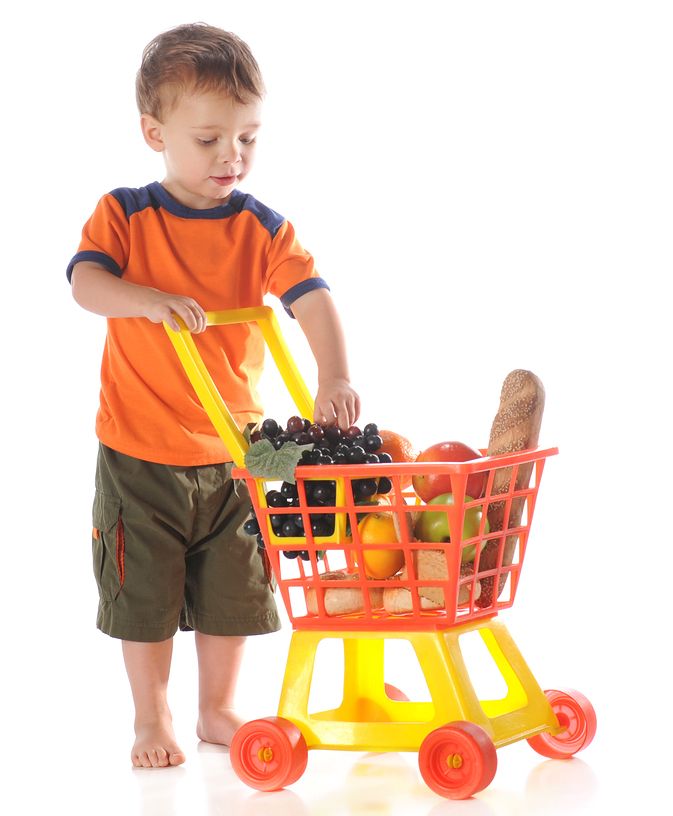
Help kids set up a pretend store and stock the “shelves” with your household items or groceries (or plastic groceries if you have a shop set).
Use a play cash register or find something you can pretend to use as a cash register. Use your imagination to find a scanner.
Make labels with prices and stick them on each item. The prices could just be the numerals 1 to 5 to start. Then make your own money or use monopoly money.
Find a basket and go shopping in your children’s shop.
For younger children, pay the exact amount in a matching coin or note. Older children can make up the amount in smaller coins/notes, or pay with a higher denomination and ask for change.
Don’t expect children to be calculating change during preschool.
Take turns being the shopkeeper and the customer.
4. Go to Work
Provide some fun dress-up clothes such as scarves, shoes, hats, suits, etc. Ask your children to get dressed for work and set up pretend work environments such as an office area, a laundromat or a movie theatre.
They will have lots of fun pretending to run the affairs of the day, especially if you play along.
Bring the concept of money into play whenever you can. Hand over a paycheck for the day’s work, ask how much the movie costs and order some popcorn and a drink, or pay for a load of laundry to be washed and dried.
The possibilities are endless when it comes to acting out earning or spending money.
5. Make a Grocery List
Teach kids to plan and budget by making a grocery list of the items they need. Then go to the shops and engage them throughout the whole process.
Note the price of each item and compare the prices when choosing between two or more of the same item. Ask your child to pay at the till, whether using cash or swiping a bank card.
6. Fish for Coins
Use a fishing rod from a child’s fishing game or make a rod with a string and a magnet hanging off the end.
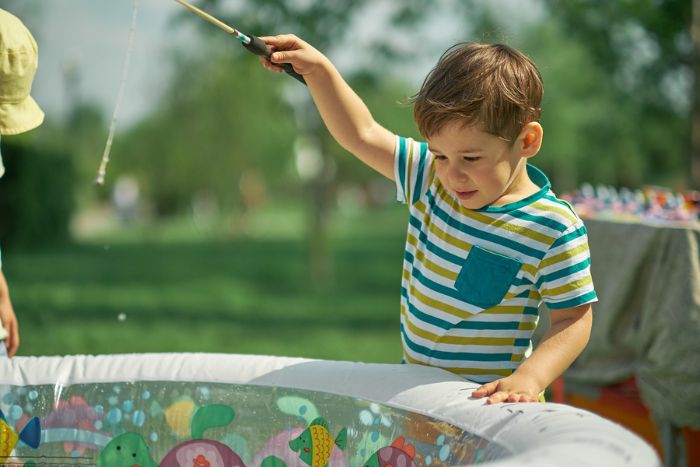
Place a variety of coins into a blow-up pool or large tub and fish for coins instead of fish.
Choose one denomination and ask your children to fish out all the same coins, or fish out all the coins and make piles of them, sorting them into their denominations.
7. Earn Pocket Money
Letting kids earn money for doing chores around the house is a topic people have differing views on.
It is probably best that children develop a healthy attitude towards helping and contributing at home, without expecting some form of reward every time.
In this way, children will also learn to show appreciation for what their parents, siblings and caregivers do for them daily.
If a child has a small set of daily chores they are responsible for on a daily basis, then you could offer some extra chores for them to earn some pocket money they can save or add to one of their jars.
Chores like helping to clear out the garage, rake the leaves or sweep the patio could be extra paid chores. Turn the experience into an educational one by drawing up a list of chores together and giving each service a price.
You may want to set a limit on how many extra chores can be done per day or week.
8. Play a Board Game
Board games such as Monopoly or Life are great resources for teaching children about money and how it flows. It is a practical way to experience earning, spending and investing money.
These kinds of games are also great for broadening your children’s vocabulary. They will learn all kinds of words and terms related to money, such as pay, mortgage, fine, sell, buy, collect, etc.
Choose the junior version of Monopoly or play in teams – an adult and a child – as the regular version of the game may be too complex for a preschooler. Explain as you go along and make decisions together.
9. Collect Currencies
Start a collection of coins or notes from around the world and teach your children about currencies.
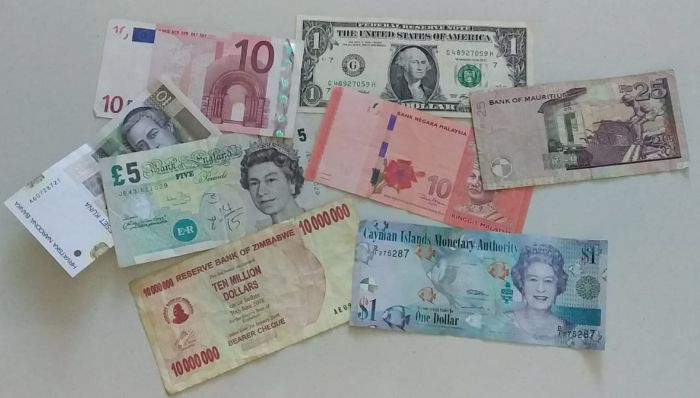
Every time you or a friend/relative goes to a country with a different currency, ask for a coin to add to your collection. Start a scrapbook where you paste the coins. Write the country, the currency and the denomination for each coin/note.
You could make this a fun, educational activity by researching the country and looking at photos and places of interest. Print a photo or the map of each place to add to the scrapbook.
10. Read Books
Children learn about all kinds of topics when reading books. Books are a great way to learn new concepts and ideas because they are presented in a fun and engaging story.
Read bedtime stories to your children that involve themes of money – people going shopping, buying a house, earning a living, etc.
These are just a few basic ideas to incorporate into daily life and play.
Need more resources for teaching maths? Here are the best early maths activities for preschoolers.
